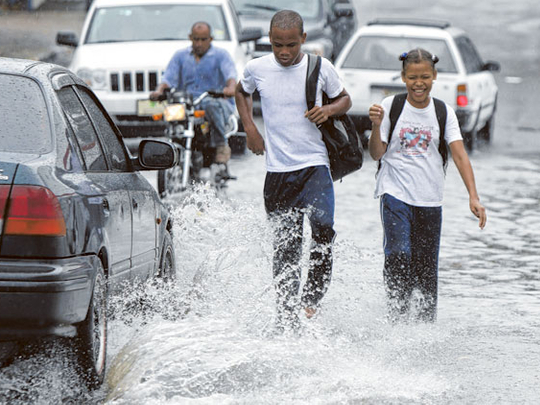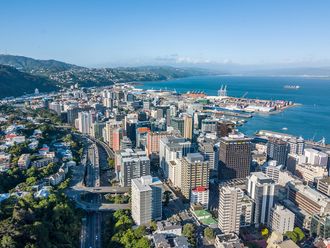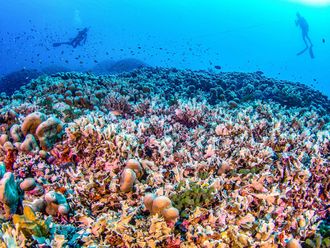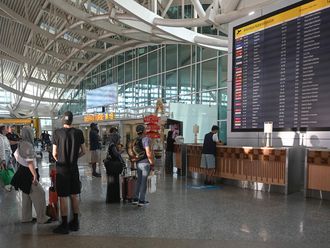
Miami: Hurricane Sandy pounded the Bahamas on Thursday as it careened toward the eastern United States after claiming 21 lives in the Caribbean, including 11 people killed in eastern Cuba.
The hurricane has wreaked havoc in Jamaica, Cuba, the Bahamas and Haiti, downing power lines, damaging hundreds of homes and ruining crops. Forecasters warn that the massive hurricane now could merge with North American weather systems and could morph into a powerful hybrid that US media have dubbed a "Frankenstorm."
Forecast models predict that Sandy could collide with a seasonal "nor'easter" weather system before hurtling up the US East Coast with potentially devastating fury. "The high degree of blocking from eastern North America across the entire Atlantic Basin is expected to allow this unusual merger to take place," said forecasters at the US National Hurricane Center.
The meteorologists said such a combination of adverse weather conditions could affect the area through Halloween on October 31, "inviting perhaps a ghoulish nickname for the cyclone along the lines of 'Frankenstorm'." The NHC said Sandy was already packing winds of up to 105 miles (169 kilometers) per hour as it moved north, near the top of the category two range on the five-point Saffir-Simpson wind scale.
The Bahamas were still bearing the brunt of the storm, with power and phone lines downed, tourists stranded and trees uprooted. Schools, government offices, airports and bridges were to be closed Thursday and Friday. At 2100 GMT, the eye of the hurricane was near Cat Island in the Central Bahamas - about 60 miles southeast of Eleuthera - and its wind field was "expanding." Sandy was moving north at 20 miles per hour.
"You should be getting ready to get indoors, locked up and locked down until the storm has really passed us," Bahamas meteorologist Geoffrey Greene was quoted as saying in The Nassau Guardian. Sandy claimed 11 lives in eastern Cuba, including several who died in the rubble of buildings that collapsed in the fury of the massive storm.
The hurricane slammed into Cuba, damaging hundreds of homes, flooding crops and downing trees, according to media reports. "It was terrible. Roofs were flying off lots of houses. Doors, too, and windows," said Laquesis Bravo, 36, who lives outside Santiago de Cuba. Nine people died in Santiago, including a four-month old infant who was among four people who perished when a house caved in.
Five more people in the province died during the storm for unspecified reasons, while two people in Guantanamo were killed by falling trees. On Wednesday, Sandy unleashed its wrath on Jamaica, where one person died, and on Haiti, where nine people were killed and three others reported missing.
The hurricane also affected the US naval base at Guantanamo Bay, where 167 terror suspects are held. Preliminary hearings for the accused Al-Qaeda mastermind of the 2000 bombing of the USS Cole were delayed. In Florida, authorities were already on alert for tropical storm conditions, warning residents to prepare an emergency plan and supplies. Schools in the state's southern counties of Palm Beach, Miami-Dade and Broward were closed for the rest of the week.
International flights from major airports in the state were kept on schedule, though some headed to or coming from Caribbean destinations were suspended.
Warnings about a possible "Frankenstorm" revived memories of the so-called "Perfect Storm" in 1991 that killed 13 people and caused $200 million in damages to the northeastern United States in late October and early November.
"The potential is there for a significant storm," WCNC-TV chief meteorologist Brad Panovich in Charlotte, North Carolina wrote on Facebook. "This system is one part hurricane, one part nor'easter and one part blizzard potentially. Impacts of all three types of storms are possible depending on location."
The National Weather Service in Philadelphia noted that the storm will be slow-moving, which "worsens the impact for coastal flooding as it will affect multiple high-tide cycles."












